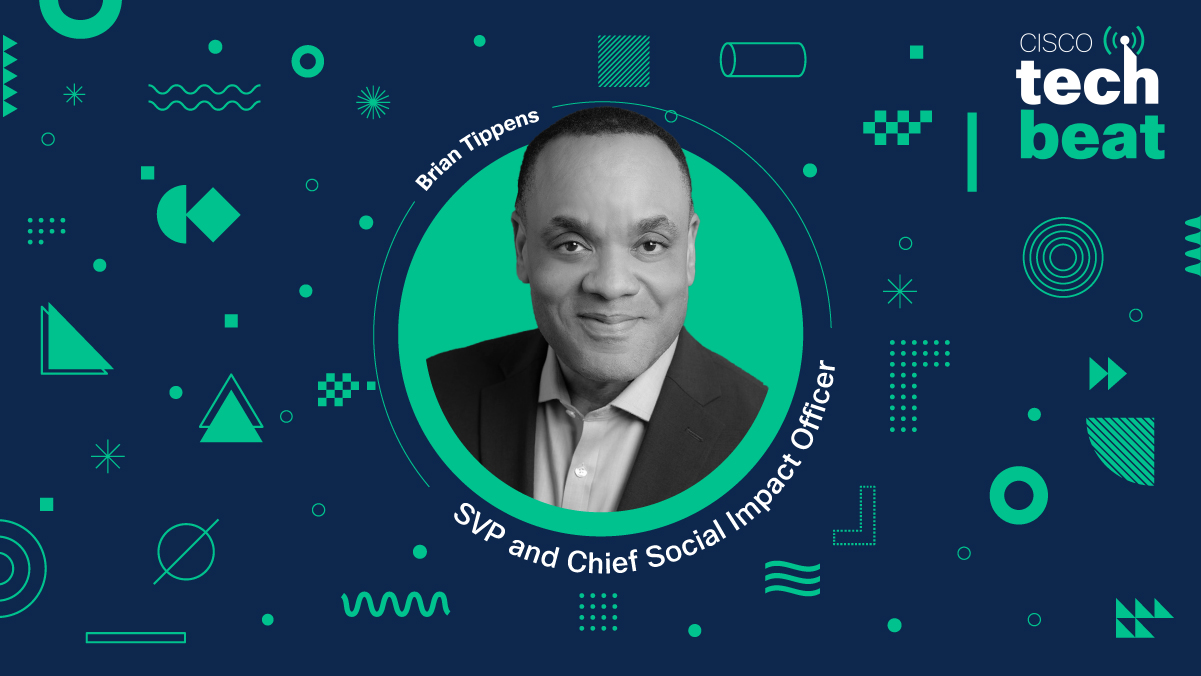A source of more than 30 percent of all carbon emissions, the world’s buildings demand a major energy makeover. And Cisco is powering up a groundbreaking opportunity to do it safely and simply.
With a solution called energy networking, Cisco is pulling together everything from AI and IoT to network visibility and low-voltage DC microgrids. By integrating these technologies seamlessly, optimizing energy networking can reduce a building’s emissions, while creating a world-class platform for connecting renewable energy sources safely, securely, and simply.
To learn more, we spoke with Denise Lee, vice president for Cisco's Engineering Sustainability Office and a prime mover for Cisco’s energy networking solutions.
Thank you, Denise! Great innovations are spurred by great challenges. Carbon emissions from buildings certainly qualify as a critical challenge, don’t they?
Hugely. More than 30 percent of all greenhouse gas emissions come from buildings. The operations related to the electricity that goes through those buildings is a big part of that, for lighting, heating and air conditioning, computers and other devices, and more. And it also includes embodied carbon, from the raw materials that go into making buildings.
Sounds like it’s ripe for a solution like energy networking.
Yes! When I first came into this role, it was a technology that just jumped out at me. There was revolutionary technology and innovation happening in the space of our power-engineering team. And I started pulling that together with the agile capabilities of our networking prowess. As we started to organically talk about it, the nomenclature of energy networking just seemed logical and obvious.
So, on a simple level, energy networking is pretty much what it sounds like — applying the capabilities of the network to the challenges of managing electricity usage, and doing it more securely and sustainably?
Yes, when you think about the basis of networking itself, a key value is gaining visibility into data, workloads, and your environment. If you apply it to power and energy, along with Internet of Things sensors, you can gain the visibility into things like lighting, powered window shades, or environmental systems. And then you can automate many of their functions, like when they should be on or in hibernation mode. Visibility, insights, analytics, security, and automation are at the core of our company. It’s what we know how to do.
At the same time, you’re powering all of these devices and endpoints off of the network’s ethernet cables, instead of high-voltage AC power lines. Let’s talk about the DC microgrid.
When energy and data are on the same lines, it opens up a lot of new use cases and ecosystems. With energy and data on the same line, it’s much lower voltage and a lot safer. Though I certainly would not recommend it, you can take the end of an ethernet cord and put it on your tongue, and you’d be fine. But you absolutely cannot do that with AC. With AC, there's also a lot of line loss. When you think of the distribution of AC electricity, it goes from a generator through all different conversions before it powers your DC device, and along the way there’s a loss of energy, up to 15 percent. If you’re cutting out some of that conversion, it’s a lot more efficient and cost effective.
I’m speaking from Cisco’s newly renovated Penn 1 office in New York, which is a great showcase for energy networking. What are some of the results we’ve seen there?
According to the CSA Group there is over a 40 percent reduction in energy waste by using DC power, saving energy, and reducing operating costs. We retrofitted the ninth floor of that building with 5,000 end points and IoT sensors and brought all of those into an energy networking DC micro-grid.
And at Penn 1, it’s just a retrofit, on one floor of the building. We retrofitted it with 5,000 end points and IoT sensors and brought all of those into an energy networking DC micro-grid. By combining technologies like AI, machine learning, and Internet of Things, we can track and monitor activity across the office, and automatically control lighting, HVAC, the motorized window shades that optimize the natural light, among others. We even have solar panels in the windows that contribute to the overall energy.
And, as you say, that’s only one floor.
Yes, imagine if you were to build a brand-new building from the ground up. There are many partners and projects of ours that are doing just that. There’s a handful of buildings in Norway that have integrated Catalyst 9000 and other Cisco technologies, and they actually have net-positive energy. They have not only reached net neutral, but because they have built-in solar and other renewable energy sources into the design of their buildings, they produce more electricity than they consume.
You mentioned embodied carbon. Penn 1 is great example of how energy networking can cut it significantly.
Embodied carbon is the carbon created in the supply chain and construction leading up to the creation of a product. In a building, it would include the steel and copper conduit that’s going up in walls and ceilings to power your devices and systems. By eliminating much of that embodied carbon from the building materials in a lower-voltage DC grid, it’s actually quite a significant impact beyond the power you are saving.
This all sounds pretty complex. How are you simplifying the experience for a building management or IT team?
In legacy buildings, there’s typically more than 30 different building management systems at work, between HVAC, security, lighting, and so on. And we think about how to simplify all this. More and more data is great, but it doesn’t have to be complex. Our strategy is to create standard consistency across both the data architecture and the unified platforms. We make this simple and easy for Cisco customers to be able to track and measure their energy management.
Cybersecurity is another potential headache.
Cisco’s security team is a world leader. And when we say networking at Cisco, that always inherently means security. We integrate security into our hardware and our software from the drawing board. And when we start to layer energy and data on the same line, all of those security policies that apply would then inherently be built into the networking component. That’s the beauty of bringing these things together.
What else excites you about the future of energy networking and the impact that Cisco can have?
It’s pretty remarkable when you think about the power of renewable energy and how far it has come the last five to 10 years. But it’s not about any one piece of technology. It’s about these ecosystems working together holistically, and energy networking can be the lifeline of both data and power to control it all. Cisco’s a trusted partner. We have an important role to play in bringing together partners who might not have worked together otherwise. When our technologies combine with the technologies of our partners, there’s no shortage of things we can solve.



